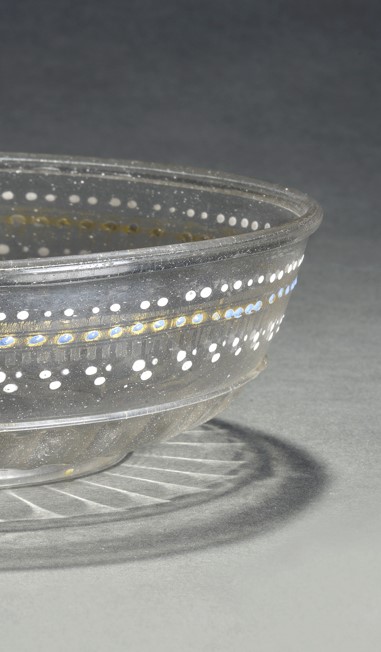
Filigree a retortoli wine glass
Conical bowl with round base. Solid propellor-shaped stem consisting of a knop above an inverted baluster-shaped section with four vertical, slightly diagonal tooled ribs. Slightly conical foot. The bowl and stem are connected by a colourless merese. The stem and foot are connected by a colourless merese of which the upper cylindrical part encloses and holds the foot.
The glass consists of a single layer of canes
Filigree pattern: a pattern consisting of three types of canes: a rete cane (type S); a mixed cane with an internal decoration of a wavering thread in the middle with an external decoration consisting of a band of six threads; a ballotini cane. Bowl and foot are made of two different cane pick-ups: the bowl is decorated with 30 canes while the foot has 33 canes.
The stem is made of the waste of one of the cane pick-ups (fig. 1) or of the canes used in the bowl (fig. 2) or foot of the glass, mixed together with colourless glass.
The use of leftovers of the cane pick-up in massive stems and knops is one of the characteristics that distinguish the late seventeenth and early eighteenth-century filigree glasses from earlier filigree examples (Laméris 2015, p. 543-545)
Glasses with this type of solid propellor-shaped stem are relatively rare. The Krug collection has a glass with a funnel shaped bowl with a similar stem (Klesse 1965, cat.no. 88); the Murano Glass Museum collection has a specimen with a slightly slimmer solid stem containing canes (Cl. VI no. 01428). The Museo San Martino in Naples has glasses with similar stems, one with a hemispherical and one with a funnel-shaped bowl (Titti 1967). Another such glass is included in a Dutch private collection.
A small group of about eight miniature filigree wineglasses made around 1700 have stems made in the same technique, now in the shape of an inverted baluster (Laméris 2012, cat.no. 17, Laméris 2018, cat.no. 3)
The technique, however, is used more often, always in combination with filigree characteristics of glasses in the Rosenborg Castle collection. In these glasses it is used for the knobs on top of the covers. While some of the filigree covers are topped with a hollow blown knop of the same type as the piece itself, others have solid colourless knops mixed with some filigree, again of the same type as the glass itself. The sort of knop is typical of three kinds of glasses. They are all represented in the Rosenborg Castle collection: reticello bowls (Boesen 1960, cat.no. 35), small reticello carafes (Boesen 1960, cat.no. 42) and reticello flacons (Boesen 1960, cat.no. 43) with solid quatrefoil knobs on top of their covers, where the threads of the filigree-waste are visible through the colourless glass. They are all made out of reticello glass. The same shapes with the same type of knop also occur with retortoli canes; for example: a filigree a retortoli bowl with three types of canes (Mariacher 1963, p. 100), and three small carafes, two in the Museum Veste Coburg (Theuerkauff-Liederwald 1994, cat.no. 450, 451) and one in the collection Gerny (Laméris 2022, cat.no. 11).
A glass of the same shape with a propellor shaped stem, made of girasole glass, with a ribbed bowl and foot is included in the Murano Glass Museum collection (Barovier Mentasti 1092, cat.no. 259)
The use of lead arsenate as an opacifier, made it possible to make a strong and intense white glass called smalto and allowed glassmakers to make new types of canes with thinner threads (see p. @). Girasole, an opalescent glass type was made by adapting the arsenic strength of this opacifier. (Verità 2017-2018, p. 5). The glassroom in the Rosenborg Castle in Copenhagen has several pieces on display made from this type of glass. (Boesen 1960, cat.no. 59-79).




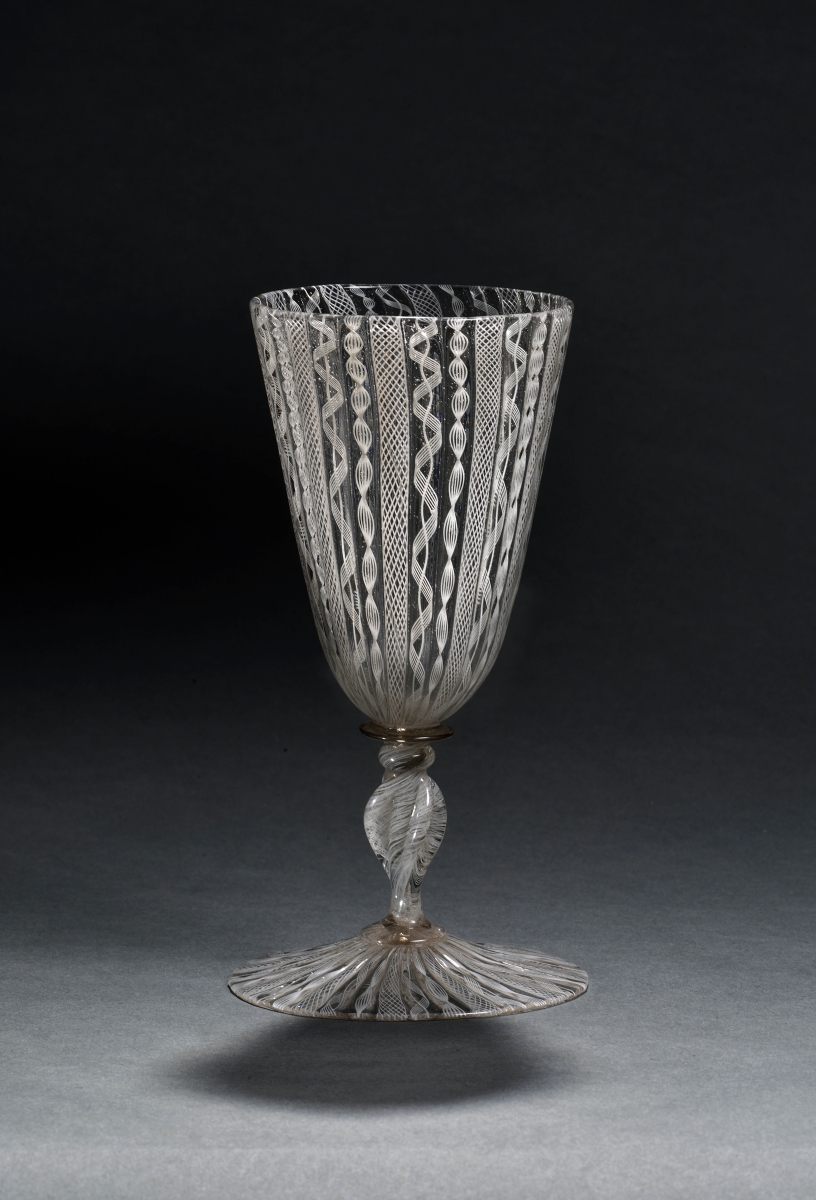
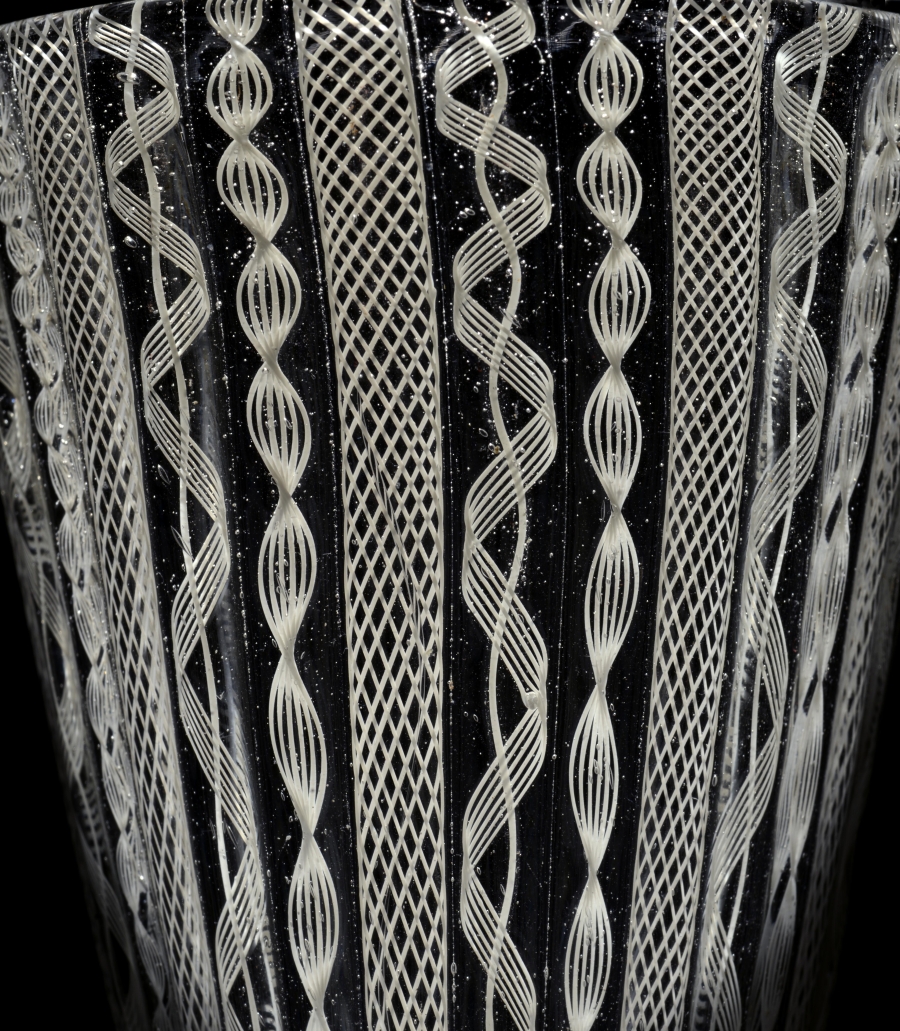
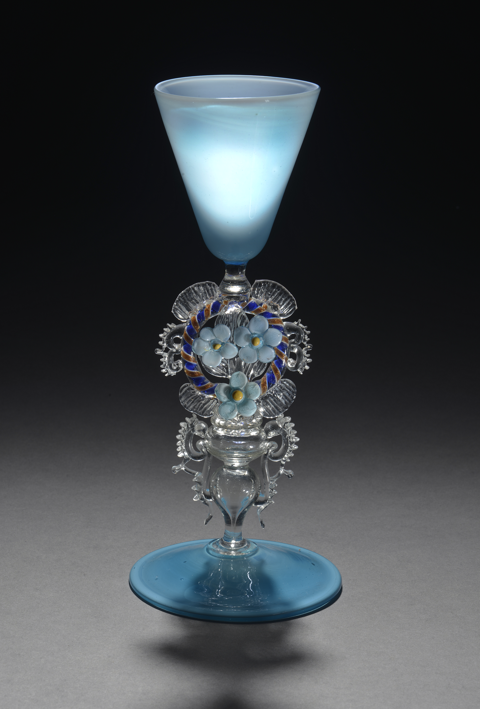



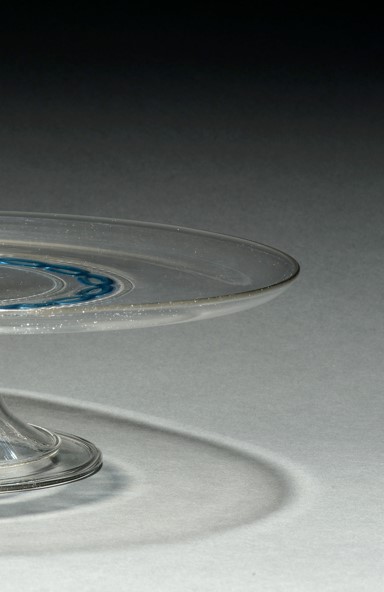
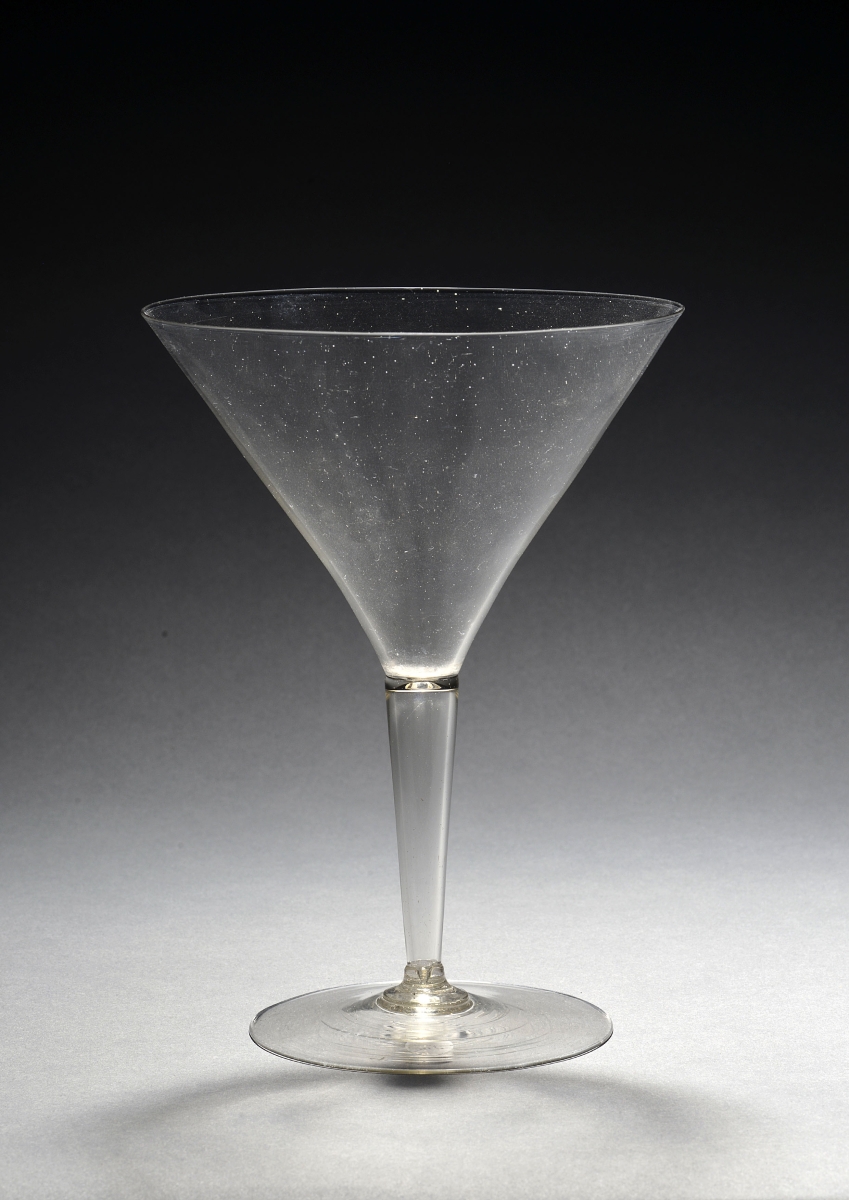
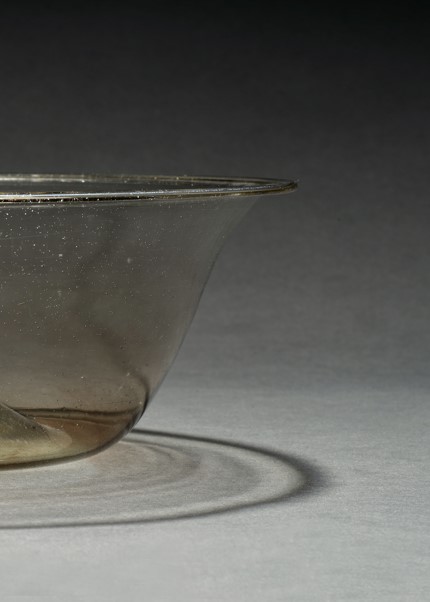
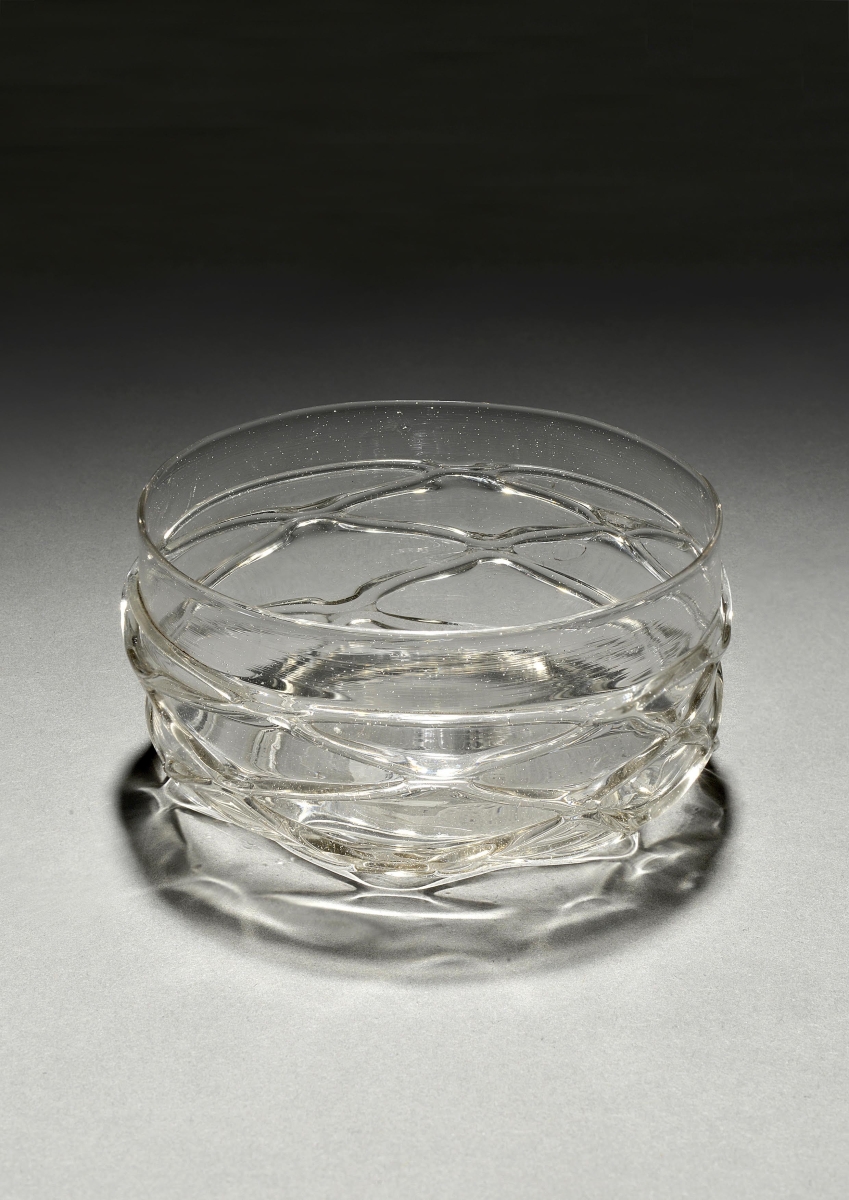
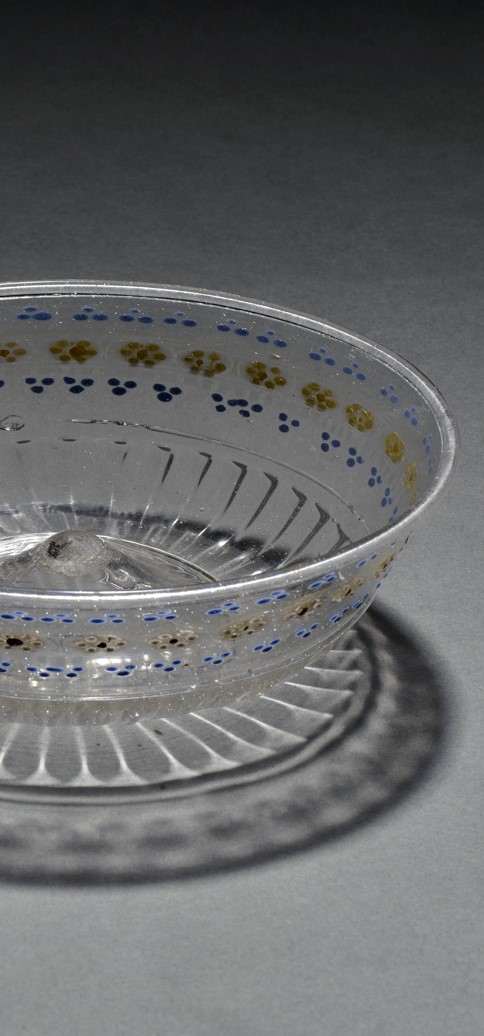
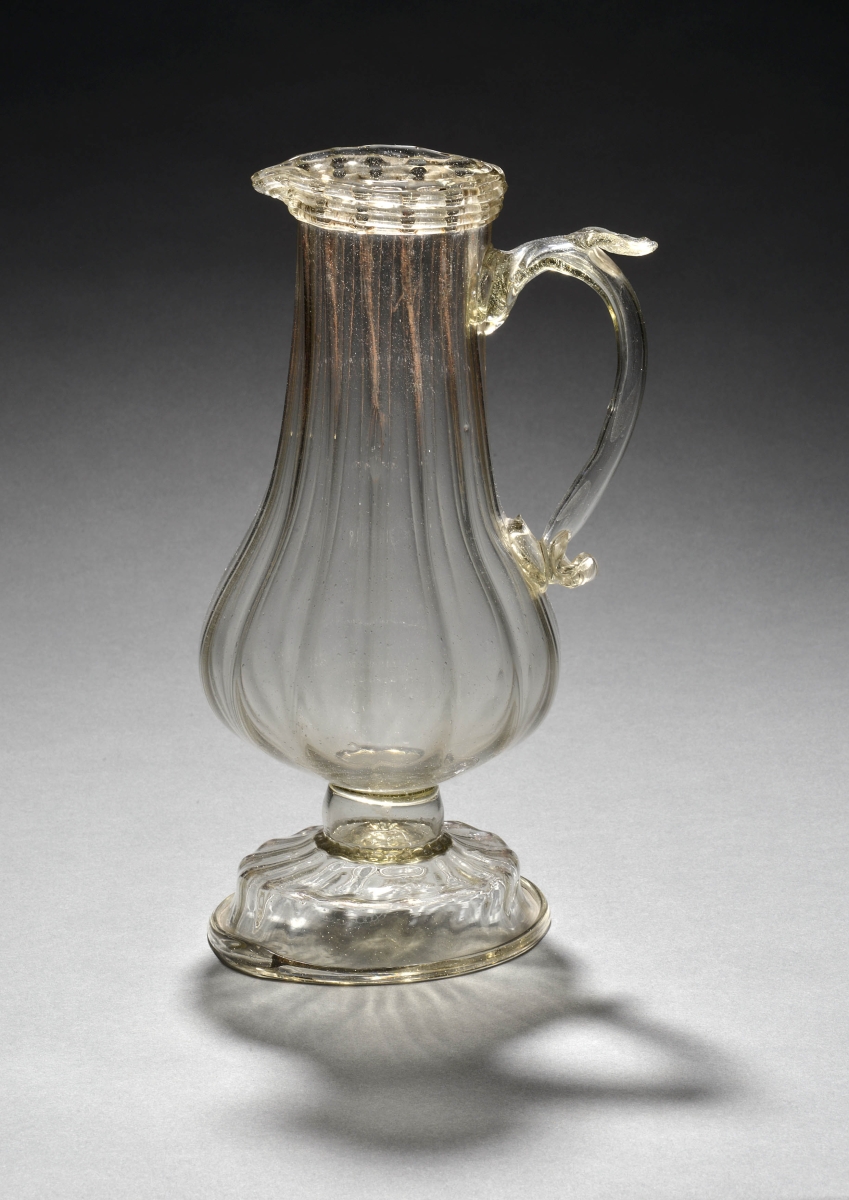
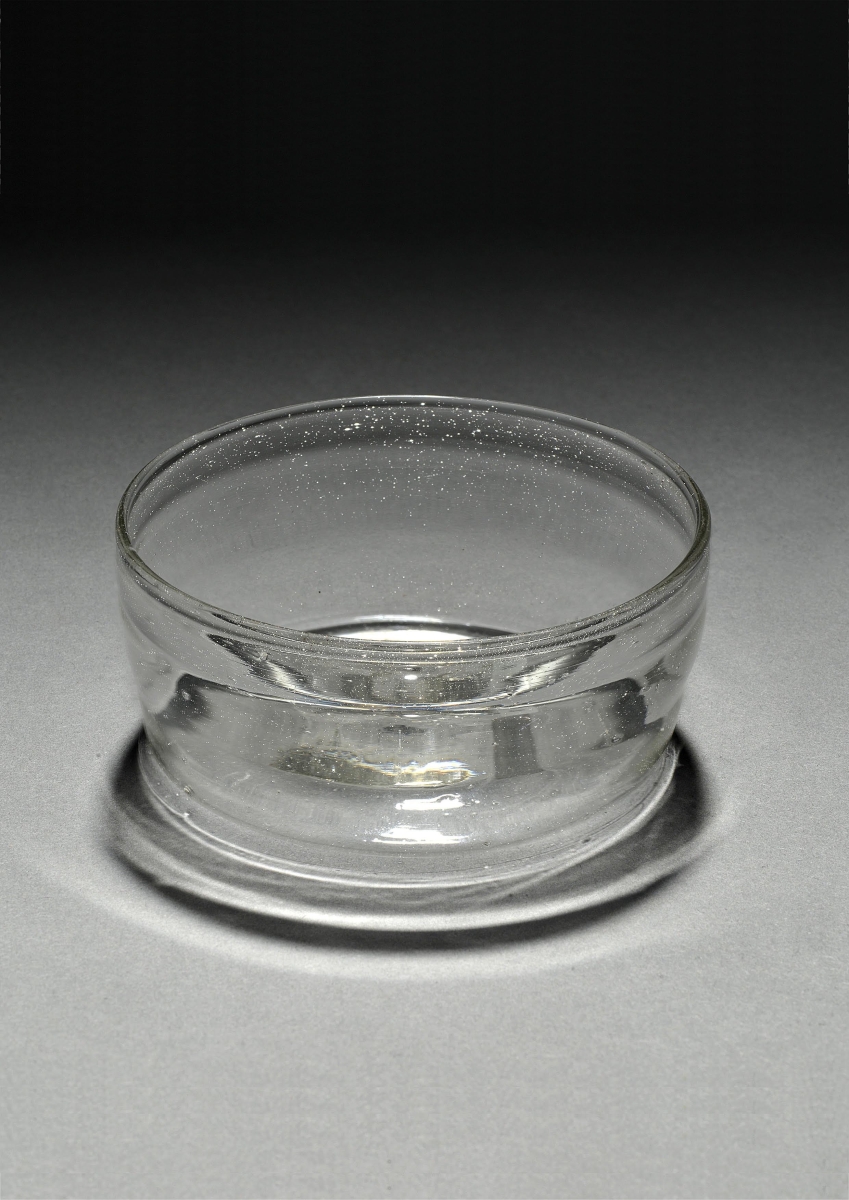
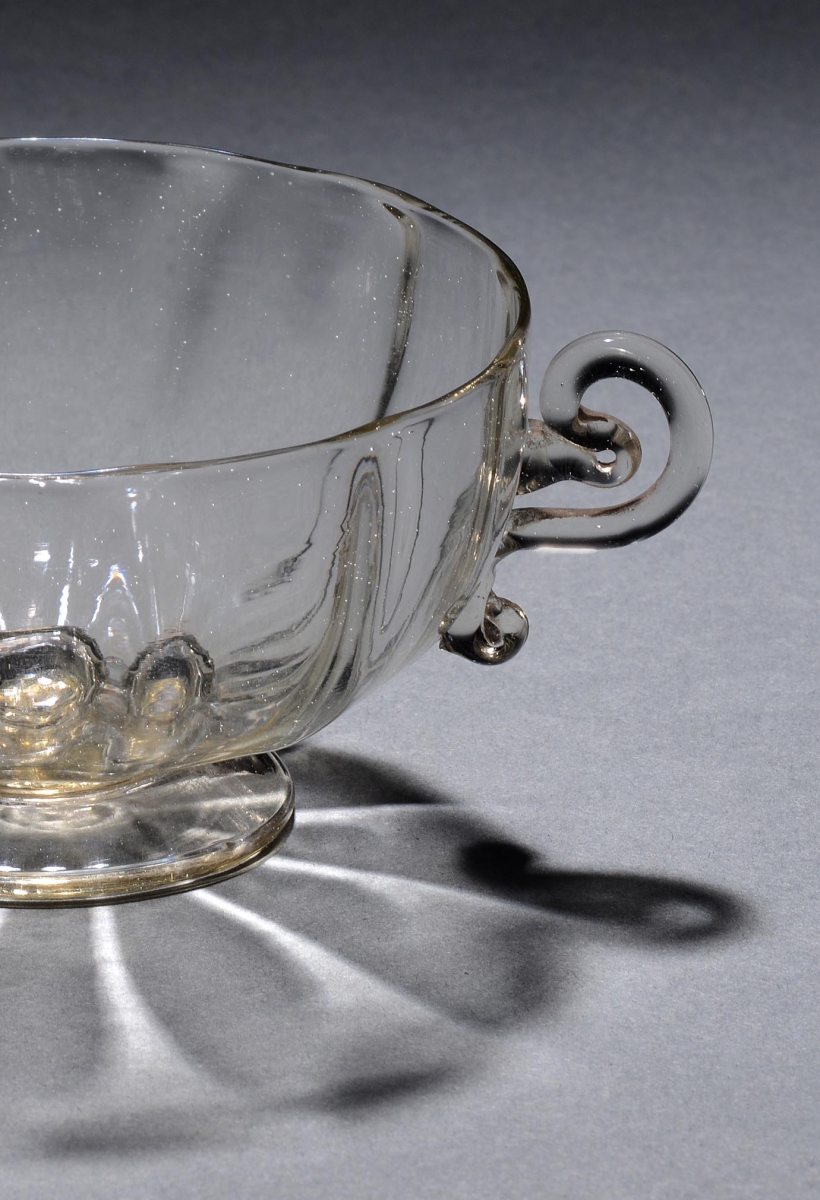
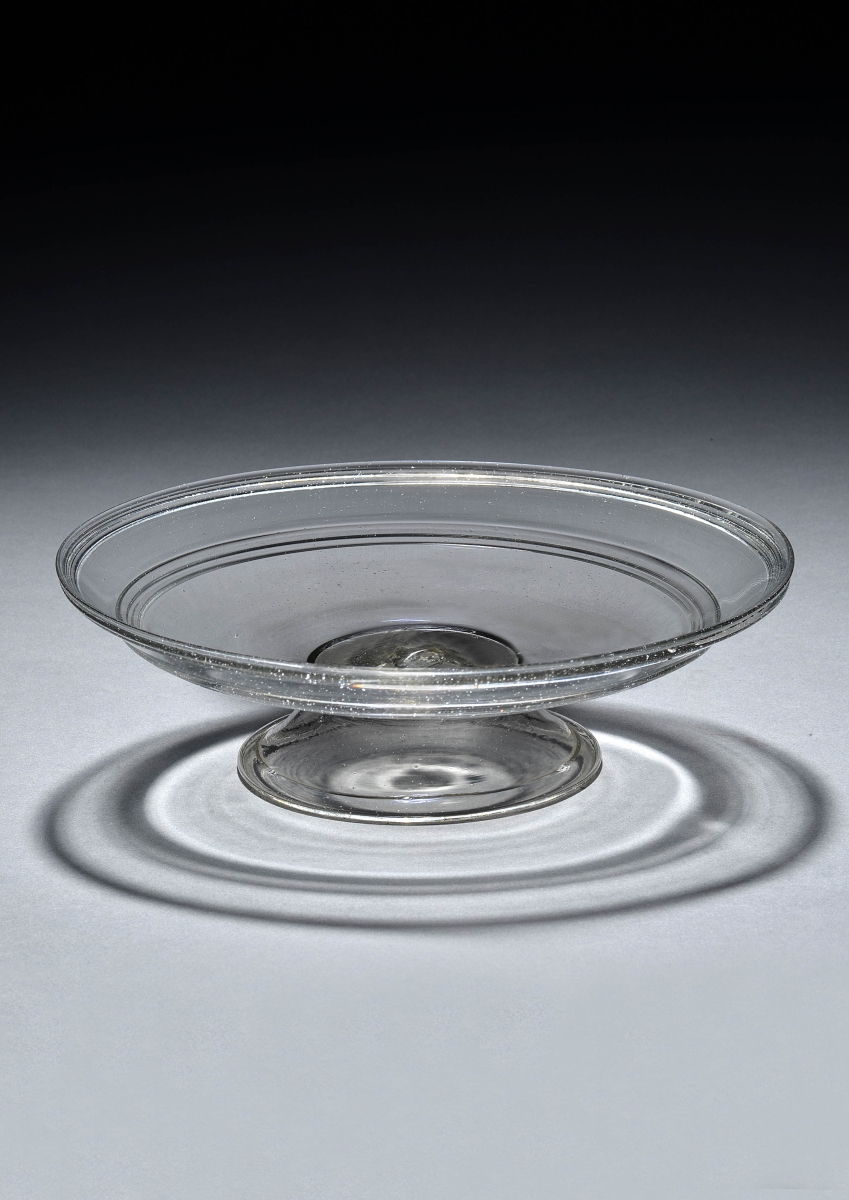
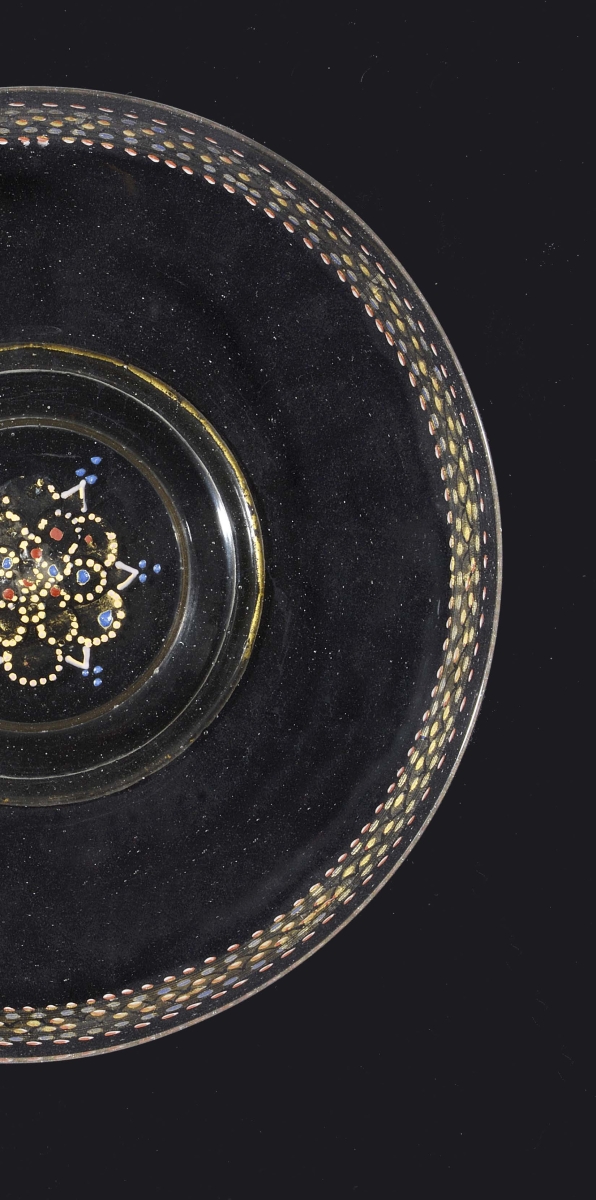
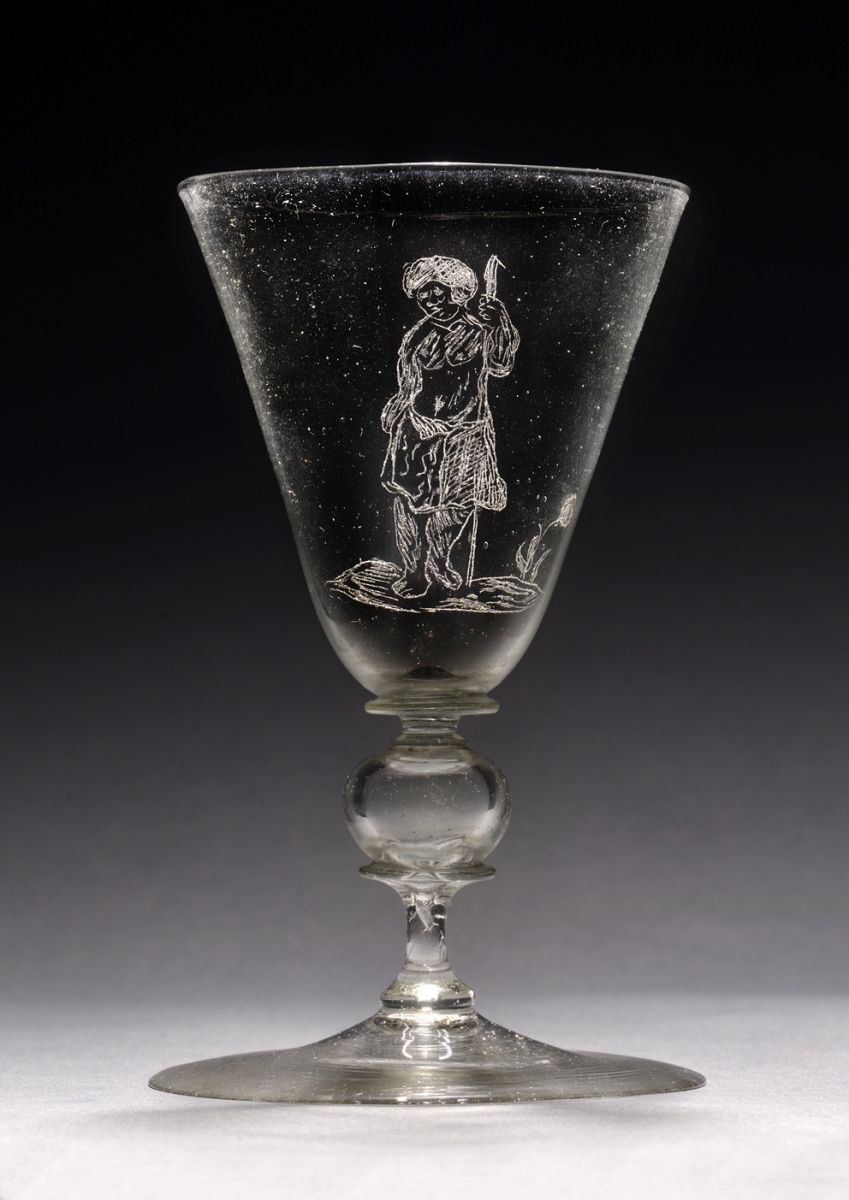
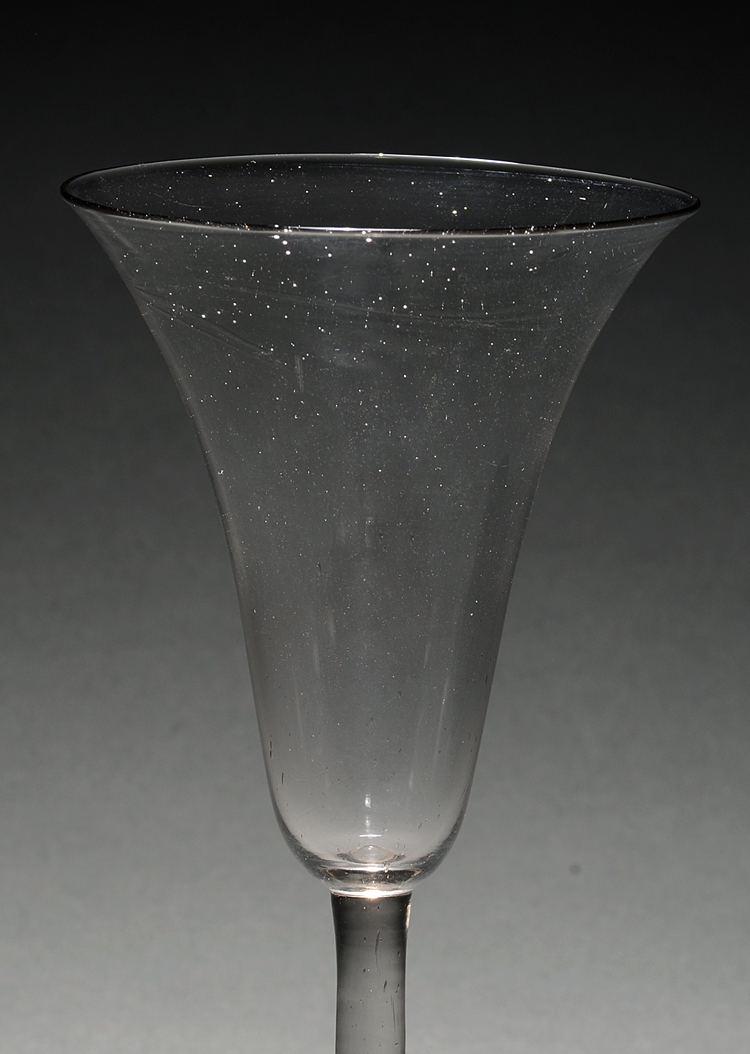


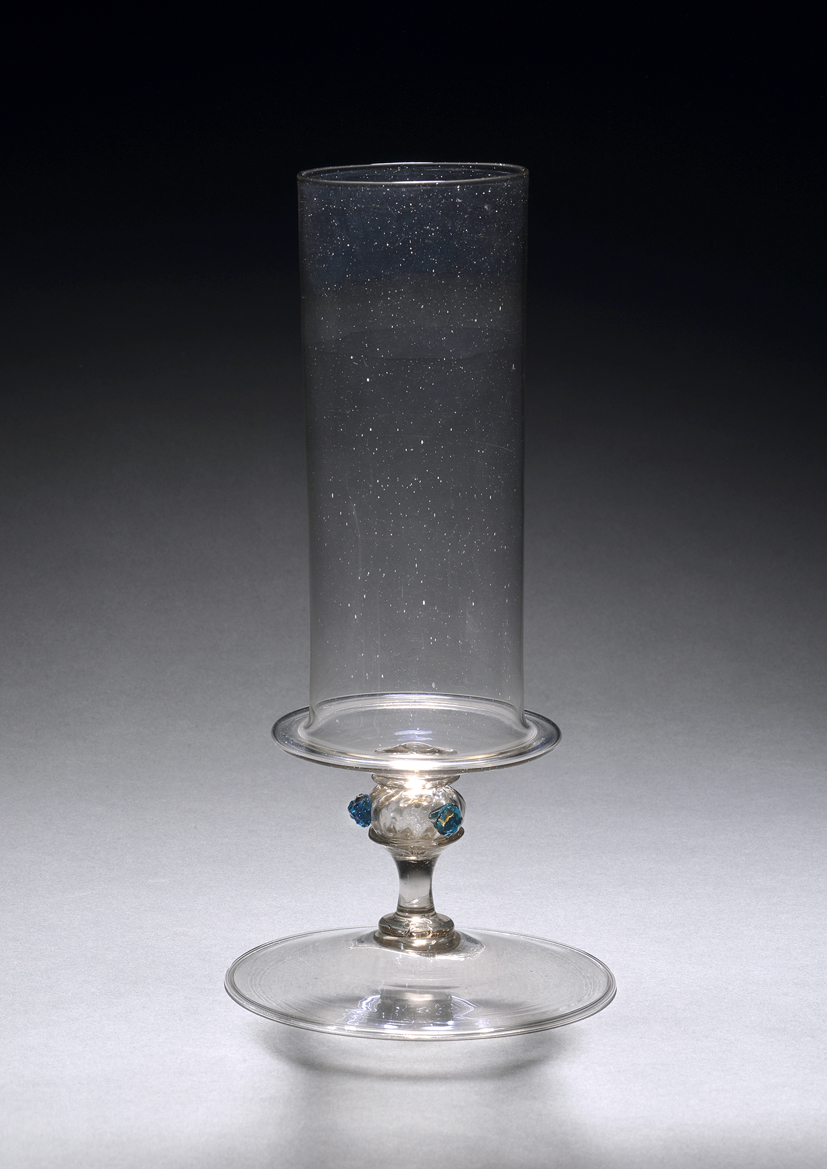
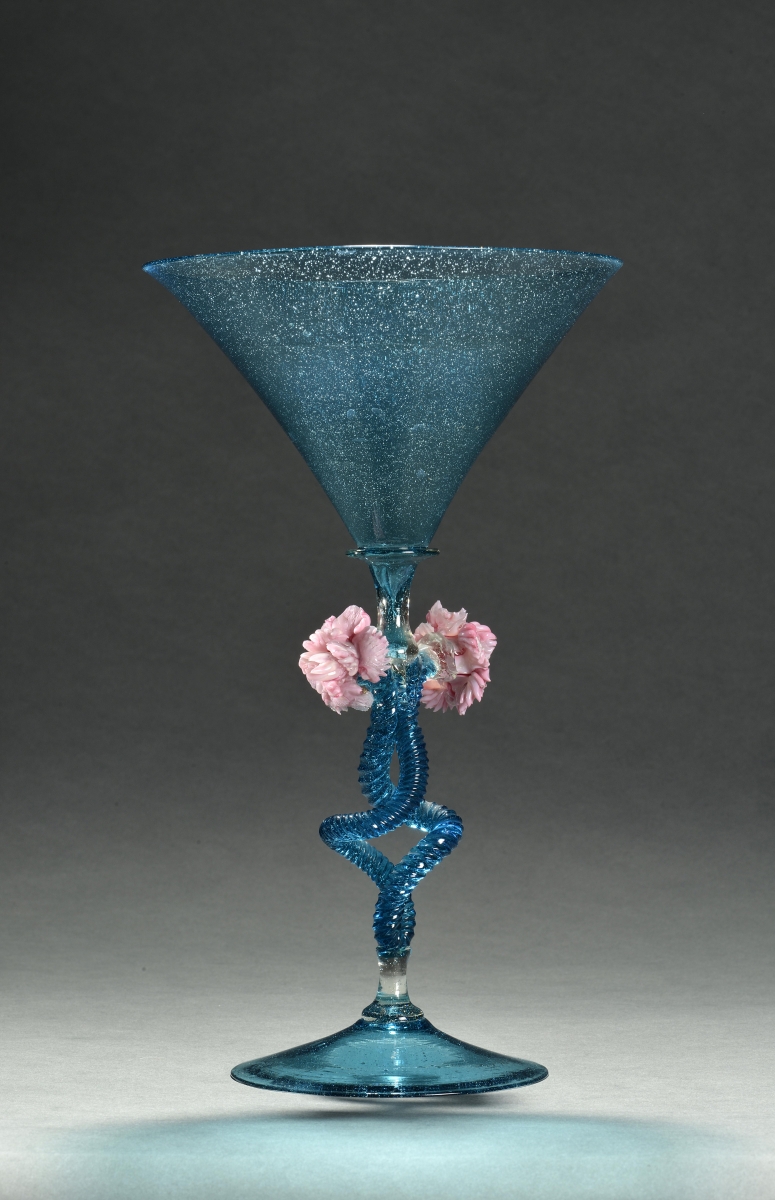
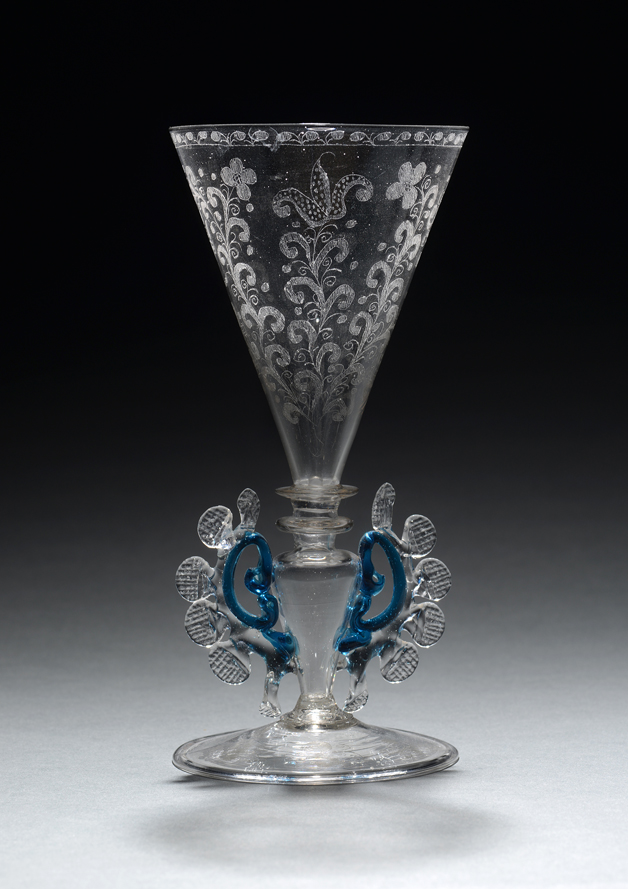
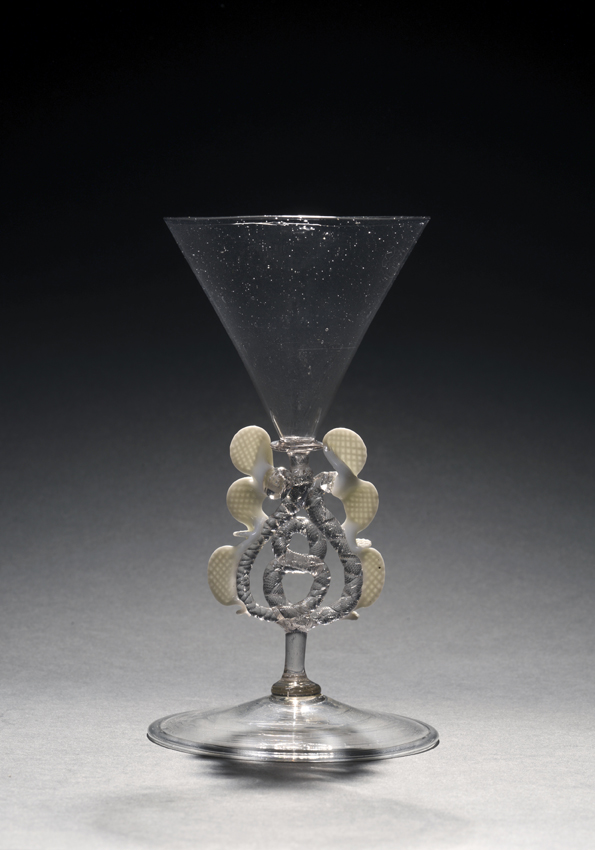

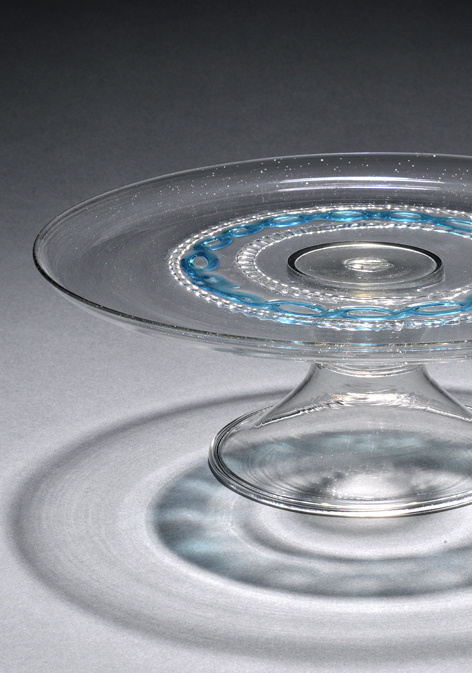
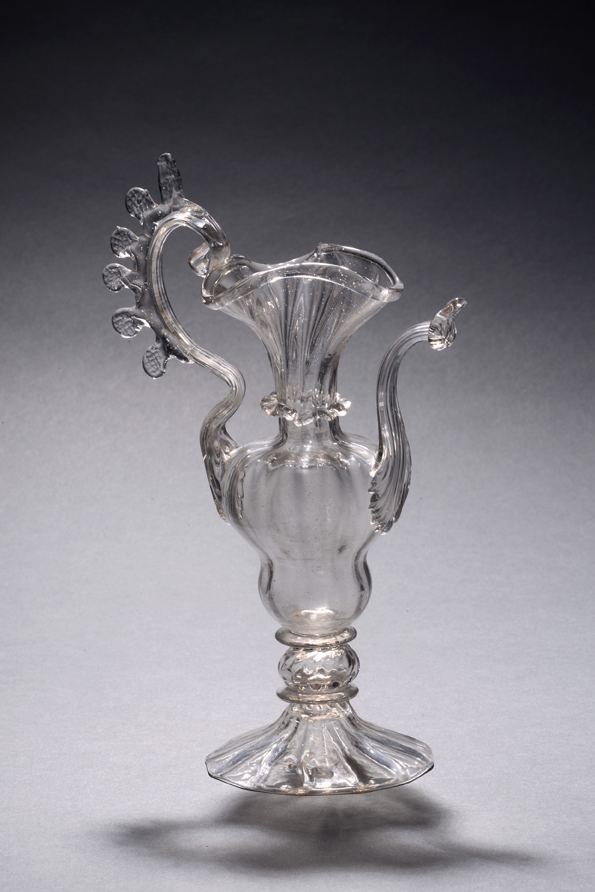
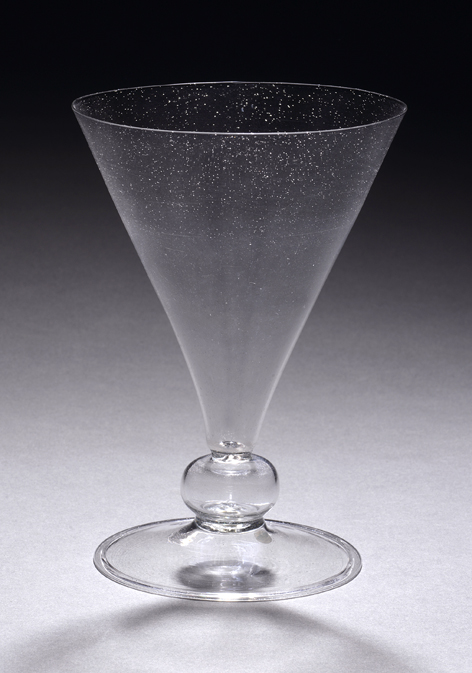


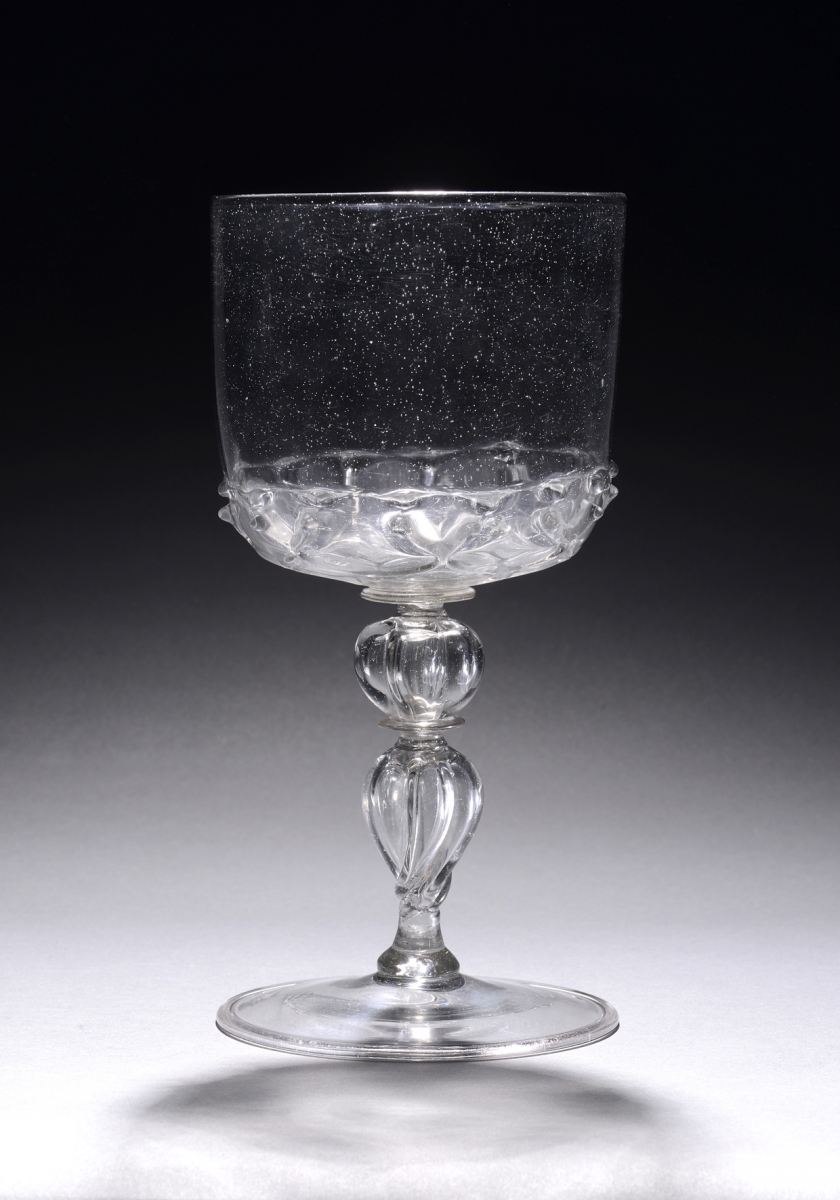

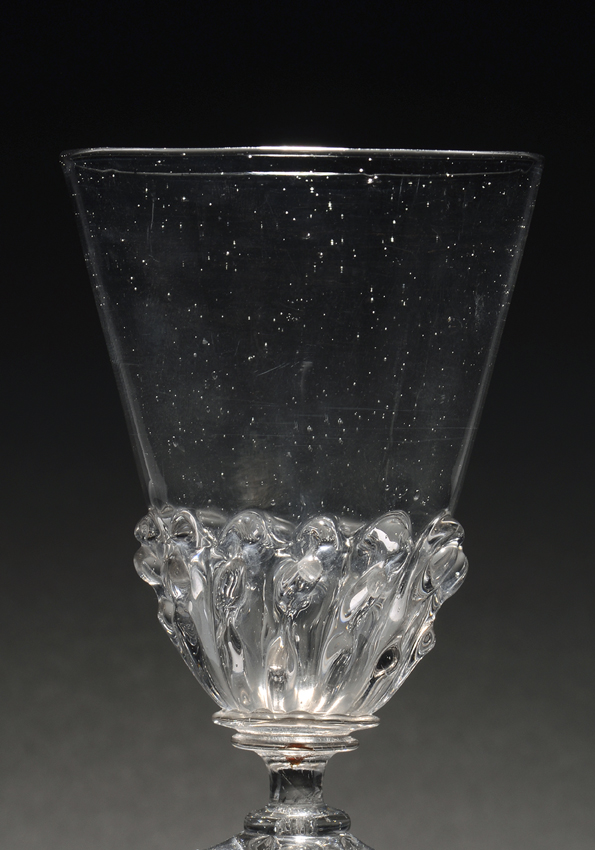


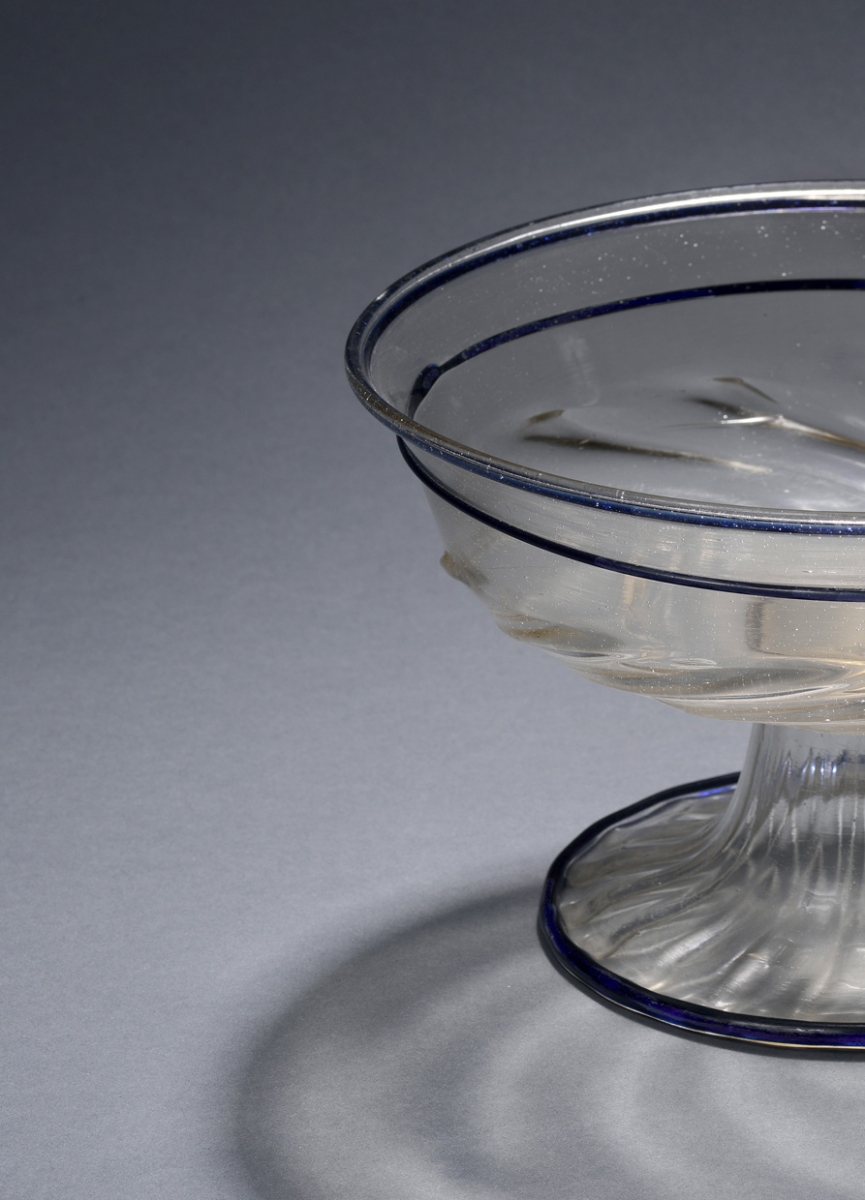
 NIEUWE SPIEGELSTRAAT 55
NIEUWE SPIEGELSTRAAT 55